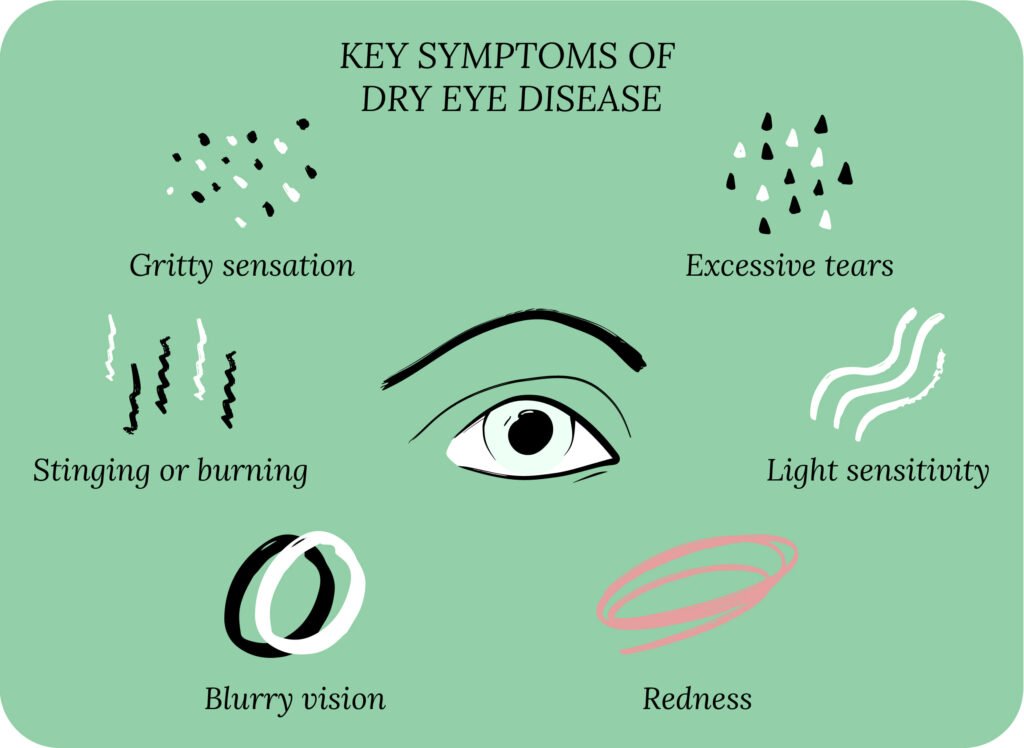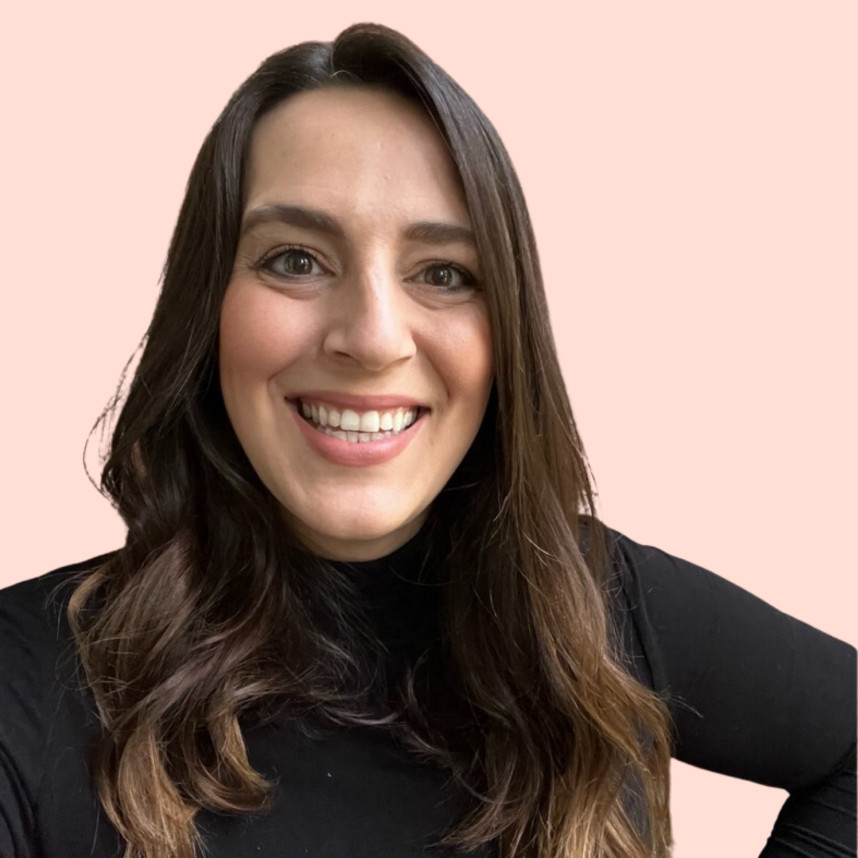Pink Eye Vs. Stye: Overview
Uh oh, you wake up with red, itchy, puffy eyes. You panic, wondering, “Is it pink eye?” Learn the difference between pink eye vs. a stye to start an appropriate treatment plan.
While conjunctivitis (pink eye) can be highly contagious, a stye is not. Learn more about each eye condition and how to keep your eyes safe from infection.
Key Points
- Pink eye and styes are common eye conditions that cause symptoms like watery eyes, inflammation and redness.
- Styes and pink eye occur in different parts of the eye and require unique treatment approaches.
- Both conditions can result from poor hygiene around makeup products, contact lenses and hand washing.
Keywords
Allergic conjunctivitis, bacterial conjunctivitis, cold compress, eyelid hygiene, pink eye, stye, viral conjunctivitis, warm compress
Taking the First Step
First thing’s first. Understand that there is nothing wrong with you if you contract pink eye! It is a common eye infection. There are about 6 million cases of pink eye in the United States each year.¹ Still, there are ways to protect your eyes from infection.
If you wonder if your eye condition may just be a stye, read on. While pink eye and styes share some similarities, they are very different.
Both conditions cause inflammation, but in different parts of the eye. This means that treatment for the two should be specific to each situation. Let’s explore pink eye first.
Understanding Pink Eye (Conjunctivitis)
The general term for pink eye is “conjunctivitis” or inflammation of the membrane covering the white part of the eye (conjunctiva).²
Viral and bacterial conjunctivitis each results from touching contaminated surfaces (or other people) and then touching your eye.³ Bacterial infections can also occur due to the use of expired or contaminated cosmetics or bacteria that grows on contact lenses or in contact lens cases.¹ Viral conjunctivitis is significantly more common than bacterial conjunctivitis.
However, there are non-infectious forms of pink eye as well, like allergic conjunctivitis (eye allergies caused by common allergens) and toxic (from chemicals like those in beauty products, chlorine or environmental chemicals).²
Symptoms of Pink Eye
Everyone experiences pink eye a little differently. However, there are some common symptoms to look for in the infected eye:³
- Whites of the eyes are pink or red
- Eyelid/conjunctiva swelling
- Watery eyes
- Itching and burning sensation
- Foreign object/gritty sensation
- Crusting of the eyelids and lashes due to discharge
Viral pink eye from a cold, flu or other infection will result in discharge that may be more watery than thick.³ Bacterial pink eye often leads to eyelids “sticking together” and produces a thicker discharge.³ Allergic conjunctivitis symptoms are similar to viral symptoms but people will also experience a runny nose, sneezing and congestion.³
Lastly, viral and allergic conjunctivitis typically affect both eyes, while bacterial conjunctivitis may affect just one eye.
Symptoms of pink eye are similar to dry eyes, but generally more severe.

Pink Eye Treatment
In most cases of viral conjunctivitis, you can manage pink eye symptoms at home and your eyes should start to clear up in about 2-4 weeks. Allergic conjunctivitis may require longer treatment, especially during allergy season. If your symptoms worsen or you are experiencing extreme pain or changes in vision, check with your health care provider immediately. Bacterial conjunctivitis may require antibiotic drops. In any case, remove contact lenses (hard or soft) and wear glasses until symptoms subside.
The top three home remedies for pink eye are cold compresses, eyelid cleansing and artificial tears.
- Cold Compresses: A cold compress provides immediate soothing relief to the affected eye by reducing blood circulation to the area. You can make a cold compress at home with cold water and a towel or use an ice pack. CorneaCare’s line of eyelid hygiene products includes a convenient, one-time-use cold compress (no need to worry about spreading infection between washcloths!). The Rescue hydrogel cold compress mask is made with plant-based ingredients that stay cooler longer than traditional compresses, all without needing a freezer. Pink eyes are no match for this powerful tool!

Rescue
Cold Compresses
Perfect for sudden flare-ups of eye dryness, pain, burning, and swollen/inflamed eyelids. Free shipping 📦.
Try today - $12
- Eyelid Cleansing: Eyelid cleansing is an important step in pink eye treatment to remove discharge and crusting. You can use a soft cloth and mild cleanser, but be careful, as some cleansers can further irritate the eyelids and eyes. CorneaCare’s Rise eyelid wipes are a safe, convenient way to cleanse your eyelids. Made with tea tree oil and hyaluronic acid, Rise wipes gently remove discharge and allow you to go about your day! Like the compresses, they come in individual packets so that you can dispose of them when you are finished.

Rise
Eyelid Wipes
Perfect for eye dryness, itching, burning, and crusting/flaking of eyelashes. Free shipping 📦
Try today - $25
- Artificial Tears: Over-the-counter eye drops may reduce the inflammation in your eye caused by conjunctivitis.² Be careful not to touch your eye with the applicator, and discard after symptoms clear to prevent reinfection.
Pink Eye vs. Stye: Key Differences
While there are some similarities between pink eye and a stye, the two are very different and require different treatment approaches. If you are ever in doubt, give your eye doctor a call or schedule a visit for an eye exam. It never hurts to get a professional opinion and rule out any other eye conditions that may be contributing to your symptoms.
Pink Eye vs. Stye: Difference #1
A stye is a result of a clogged meibomian (oil) gland that line the eyelid margin.⁴ Pink eye affects the conjunctiva on the eyeball.
Pink Eye vs. Stye: Difference #2
Styes typically cause a painful red bump, almost like a pimple, near the eyelid margin.⁴ You won’t experience this with pink eye.
Pink Eye vs. Stye: Difference #3
While styes may cause some excess tearing, you shouldn’t wake up with a crusted eyelid from a stye like you commonly do with pink eye, unless the stye starts to drain.
Pink Eye vs. Stye: Difference #4
With pink eye, most people experience very pink or red eyes. With a stye, only the inside of the eyelid near the bump or painful area may be red.
Pink Eye vs. Stye: Difference #5
Viral and allergic pink eye will typically affect both eyes, while styes typically affect one eye.
Note: A stye and a chalazion are similar. A chalazion forms when a meibomian gland is clogged, and oil starts to back-up. When the chalazion becomes inflamed (for various reasons), it’s referred to as a stye.
Pink Eye vs Stye: Similarities
While pink eye and styes present differently in their symptoms, they are similar in the way that they develop.
Both a stye and pink eye can occur due to poor eye hygiene. Improper contact lens cleaning, expired or contaminated cosmetics and not washing hands before touching eyes can contribute to both eye conditions.
This is why paying attention to what goes in and around your eyes is so important for maintaining eye health!
Stye Treatment
A warm compress is the best treatment approach for a stye to reduce inflammation and help loosen the meibum (oil) in the oil glands.
You can make a warm compress at home using warm water and a washcloth or towel. However, you may find that it only stays warm a minute or two before you need to rewet. You can also place uncooked rice in a sock, tie it at the end, and place it in the microwave until the heat reaches the desired temperature. You may find that it is awkward to steady on your eye, though and you may need to hold it in the right place.
If you are prone to styes or want to try a different warm compress approach, CorneaCare’s Rest warm compress eye mask comes in a convenient, one-time-use packet and stays warm for up to 30 minutes, all without needing to microwave! Rest uses plant-based ingredients that are safe for the eyes to deliver warming comfort to the glands in the eyelids.

Rest
Warm Compresses
Perfect for eye dryness, fatigue, tearing, and puffiness of the eyelids. Free shipping 📦.
Try today - $30
Putting It All Together
Styes and pink eye share some commonalities but are different eye conditions requiring different treatment approaches. If you are ever in doubt, visit your eye doctor (optometrist or ophthalmologist) for an evaluation.
To prevent eye infections, practice daily eyelid hygiene, use clean makeup brushes and do not share eye makeup. Always wash your hands before touching your eyes or the area around your eyes and disinfect contact lenses and cases daily. Remove your eye makeup before you go to sleep at night with a safe eyelid cleanser.
Your eyes will thank you a hundred times over!

All Rounder
Eyelid Hygiene Plan 3
Perfect for eye dryness, burning, itching, grittiness, crusting/flaking of eyelashes and inflamed/swollen eyelids. Free shipping 📦.
Try today - $60
What’s Next
Your eyesight matters! Learn more about how to keep your eyes healthy for life.



